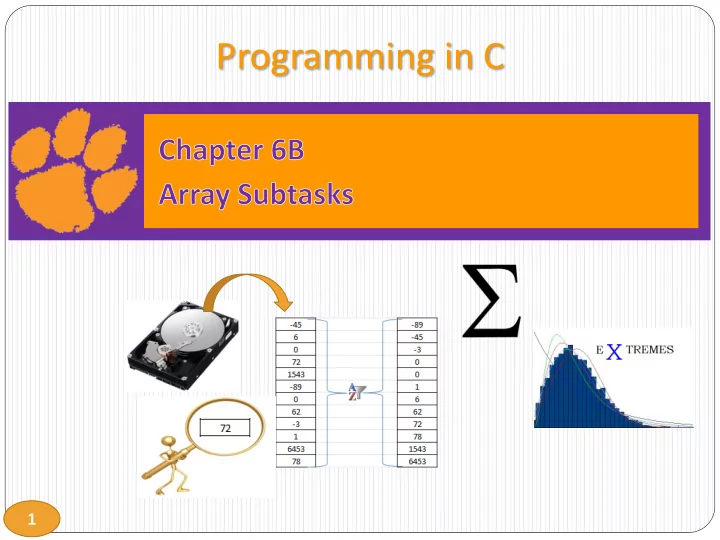

Programming in C 1
Programming with Arrays Subtasks Partially-filled arrays Loading Searching Sorting Sum, average Extremes 2
Partially-filled Arrays (Common Case) Must be declared some maximum size Program must maintain How many elements are being used and/or Highest subscript 3
Sizeof and Arrays Operator sizeof returns the total bytes in the argument Total elements = sizeof(array) / sizeof(data-type) Example Sizeof does not return total bytes being used You cannot use sizeof to determine the number of elements being used in a partially filled array 4
Loading an Array Be careful not to overfill Do not read directly into array elements 5
Loading a Two-dimensional Array 6
Safer 2D Load 7
Searching an Array Linear search Simple Binary search Requires sorted array 74? Generally faster for large arrays May require the use of an indicator to denote found or not found 8
Linear Search Example Using While 9
Linear Search Example Using For 10
Sorting Place array into some order Ascending or descending Many types Simple: Selection More intelligent: Bubble, selection, insertion, shell, comb, merge, heap, quick, counting, bucket, radix, distribution, timsort, gnome, cocktail, library, cycle, binary tree, bogo, pigeonhole, spread, bead, pancake, … 11
Selection Sort Compare element to all elements below and then move to next element, swap when appropriate 12
Bubble/Sinking Sort Compare adjacent elements, swap when appropriate Stop if no swaps on a pass 13
Sum & Average Example Verify positive count before computing average Protects against division by zero 14
Extremes Same techniques as chapter 5 – best: Assume first is extreme Compare others to current extreme Replace extreme when finding new extreme 15
Extremes: Find Maximum Example 16
Programming in C T H E T H E E N D N D 17
Recommend
More recommend